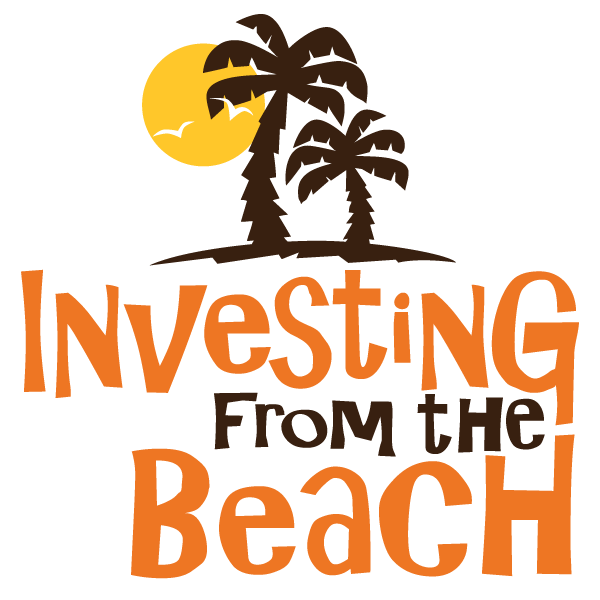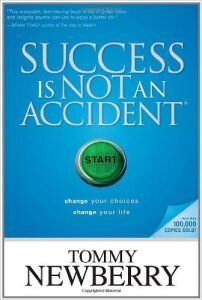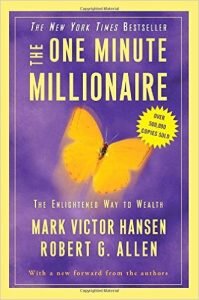
BOOK LIST
Some of the links on this page are affiliate links to Amazon (they pay a small commission if you click through).
“You will be the same person in five years as you are today, except for three things: the people you meet; the books you read; and the work you put in.”
“Reading every book on this reading list will NOT make you a success in the stock market, nor in the real estate market, nor any other kind of investing. Success comes from doing the work; on a daily basis. The reading is an important way to help with your thinking. You need to do both – you have to read; and you have to put in the effort. Both are important.”
No Excuses by Kyle Maynard.
Every one of us has used lots of excuses not to do something; when you learn what the author has done and what he overcame, you quickly realize that “you” have no excuse NOT to do whatever that “something” is.
Rich Dad, Poor Dad by Robert Kiyosaki.
The modern day classic of personal finance. The story of two perspectives; one of the employee mindset of “get good grades so you can go to a good college; get a good job; climb the corporate ladder; get a pension”; in contrast to that of a business-owner mindset of “be willing to fail as you learn; learn how to have money work for you; utilize leverage”. This book won’t tell you “how to do”, but it does provide an awesome perspective on the importance of “how to think”.
Cash Flow Quadrant by Robert Kiyosaki.
Kiyosaki gives a great description of 4 potential sources of income that are available to every single person on the planet. I might argue that there are 3 choices; work for someone in a business; work for yourself in (or on) your business; invest in a business. Whatever your situation, this is a great book to get you thinking about where you are spending your time, and whose business you truly are working on.
Introduction to Technical Analysis by Martin Pring.
A good overview of a number of ways/opinions on how one might interpret price and volume action of a stock and/or the overall market. This book is dry and does not contain all of the answers, far from it! That’s why it is called “Introduction…” My suggestion is to simply plow through it; don’t obsess, just pick up what you can.
Rich Dad’s Prophecy by Robert Kiyosaki.
An interesting perspective on the direction that the country, and the world is heading.
There are two common complaints about Robert Kiyosaki’s books:
1) they are repetitive and
2) they don’t give the reader a roadmap of “how to do it”.
Here’s a make-you-think story: A few years ago, I told someone that I re-read a few of Kiyosaki’s books about every two years and I pick up new things each time I re-read them. They looked at me with great disdain, “Why would you waste your time reading such a simple book, multiple times?” I asked them, “I’m not the brightest guy around, but doesn’t it seem odd that a person who works from 9 to 5 while dreaming about becoming financially free, is questioning the actions of the person who doesn’t work because they’re already financially free, living their dream…” What I got in response was a long stare…
Trading in the Zone by Mark Douglas.
A fabulous book that delves into the psychology that every trader/investor must learn to recognize and deal with. You’ll re-read this one many times over the years.
The Market Maker’s Edge by Josh Lukeman.
I like many things about this book, including that it gives a good perspective on the importance of the various economic reports that are regularly released. Also provides a nice perspective on oscillator and momentum indicators.
The Richest Man in Babylon by George S. Clason.
A classic, timeless read. “10% of all I earn is mine to keep”. My suggestion for parents; buy this in audio and play it in the car every single time you drive with any kids. They won’t want to ride with you after awhile. So what, keep playing it. As they get older, they will have that mantra seared in their mind and they won’t know where it came from!
Getting Started in Options by Michael Thomsett.
Provides a good overview of options.
The Instant Millionaire by Mark Fisher.
Not the best title for a book that has such depth. The book is a fast read yet gives great suggestions for how to achieve a substantial income. If you’ll couple this with the “Success Is Not an Accident” book and actually do what’s described, I believe you’ll like your results.
The Lone Survivor by Marcus Luttrell.
The story of a Navy Seal team whose mission went awry. This was made into a movie. Ignore the movie, read the book. There is a chapter that discusses what the Seals do as part of their training. Once you read it, you will never complain about a cold shower ever again. Couple that thinking with the message contained in No Excuses.
Living with a SEAL by Jesse Itzler.
A funny true story of an owner of the NBA Atlanta Hawks hiring a Navy Seal to be his live-in personal trainer for a month. David Goggins is “Seal”, although never identified in the book. Goggins has a saying, “When your brain says that you’re done, you’re only about 40% done.” Remember that statement the next time you’re doing something that is physically challenging…or mentally challenging.
Success Is Not An Accident by Tommy Newberry.
Develop a vision for what you want; plan it out; execute against the plan; correct where necessary. That sounds like every other goal book that is out there; however, this one is different. I believe you’ll love it. I’ve told lots of people about this book; the ones who take the time to do the exercises that are laid out in the book often tell me that this has become one of their favorite all-time books. I believe it should be much more well-known than it currently is.
The One Minute Millionaire by Mark Hansen & Robert Allen.
This book got me thinking about leverage in a whole different view. As with anything, achievement requires action.
The Golfer & The Millionaire by Mark Fisher.
The message that I took away from this book was that you MUST practice as if it is real. You see it whenever a championship game comes down to the last play; if the player is successful, his team wins the championship. Every single kid has envisioned himself in that scenario when they were playing in the backyard. Now, when they’re facing it in real life, in front of thousands in the crowd, and millions on TV, that’s when you get to see who has truly practiced as if it was real.
The Power of Focus by Canfield, Hansen, and Hewitt.
10 guidelines to get you focused in your thinking and focused in your actions. Get a clear vision of what you want; make it a habit to work toward that goal; and let absolutely nothing get in the way of you completing the requisite tasks.
Secrets of the Millionaire Mind by T. Harv Eker.
You can focus on opportunities, or you can focus on obstacles. Choose one, because that is what you will stumble upon. Once you realize that, you will witness both of those mindsets on display in people all around you. Then you start to see personal examples of both as well. This is along the lines of the message that I took away from the book “The Secret”, this book talks about how your thoughts drive your feelings, which then drive you to act, which then lead to results; so “how you think” is the critical first step. This is a great read.
The Creature from Jekyll Island by G. Edward Griffin.
It seems ironic that schools teach kids about the various periods and events in US history; yet they don’t teach about the formation of the US Central Bank. School teaches kids a specialized skill that they can use for a job, so that they can make money to support themselves, and become a productive member of society. However, schools don’t teach us “what is money”, nor do schools teach us how to manage the money that we work so hard to obtain. This book will teach you “what is money”; most people have no clue. Warning: the book will not make you happy; but it is important that you know.
Reminiscences of a Stock Operator by Edwin Lefevre.
My absolute all-time favorite book; written by Jesse Livermore, the Warren Buffett/George Soros of his time, back in the 1900s. When you read it, you’ll swear that the author has been looking over your shoulder, and looking into your mind as he describes what he thinks and feels as he is dealing with his emotions while trading.
The One Thing by Gary Keller and Jay Papasan.
After having read countless books from the “how-to-think” genre (I prefer that term over “self-help” books), I’m convinced that this book should be the “first” book that people read from that genre. And arguably, the only one….but you won’t realize that until you’ve read a bunch of other ones!
Don’t Eat The Marshmallow Yet! by Joachim de Posada.
A great story about young children who are placed in a room, and told not to eat a marshmallow. If they follow the rules, they’re rewarded with another. Then, to learn what that personal trait leads to as they become adults will really make you stop and think.





















